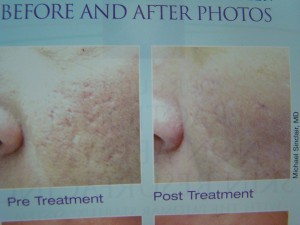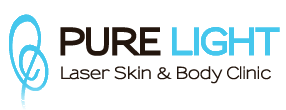Non-ablative Fractional Laser vs. Ablative
The cosmetics industry started out treating scars with CO2 lasers without truly knowing the effects that it might have on olive-toned skin and ice-pick scarring. When it became clear that CO2 lasers sometimes made scars worse and they had to turn away clients with darker skin. Now, they have developed a fractional non-ablative laser that offers the best results for all skin types and scarring.
All scars (superficial or deep) or rolling scars are candidates for laser treatment.
Ablative lasers have a high selectivity for water. As a result, their action takes place mainly on the surface. All ablative lasers have high risk of complications and side-effects. Adverse reactions to the first generation of ablative lasers can be classified as short-term (bacterial, herpetic, or fungal infections) or long-term (erythema that continues for over three years, hyper-pigmentation, or scarring). In particular, scarring after CO2 laser therapy may be due to over-treatment of the scarred area.
Non-ablative fractional lasers go deeper. Among non-ablative lasers, the most commonly used are fractionated technology. Non-ablative lasers do not remove the tissue, but rather stimulate new collagen formation and tighten the skin, which causes the scar to raise to the surface. Filling in the scar from underneath offers the best results. Long-pulse and separate wavelengths offer a controlled thermal injury to the dermis, with subsequent neocollagenesis and remodelling of scarred skin.

Non-ablative cosmetic laser systems have become increasingly popular for the treatment of facial rhytides and acne scars because the risk of side effects is low, and there is less down time.
Although some improvement was achieved with ablative lasers in the past, the results obtained were often not impressive. For this reason, a new concept in skin laser therapy, fractional photothermolysis, has been designed to create microscopic thermal wounds to achieve homogeneous thermal damage at a particular depth stimulating collagen and elasticity within the skin, a method that differs from chemical peeling, microdermabrasion, and laser resurfacing.
Clinical and histopathologic studies have previously demonstrated the efficacy of CO2 laser resurfacing, in the improvement of facial atrophic acne scars. But for ice-pick scarring, non-ablative laser treatment shows the most consistent result and improvement without much, if any, risk.
This article was written by Pure Light Laser

